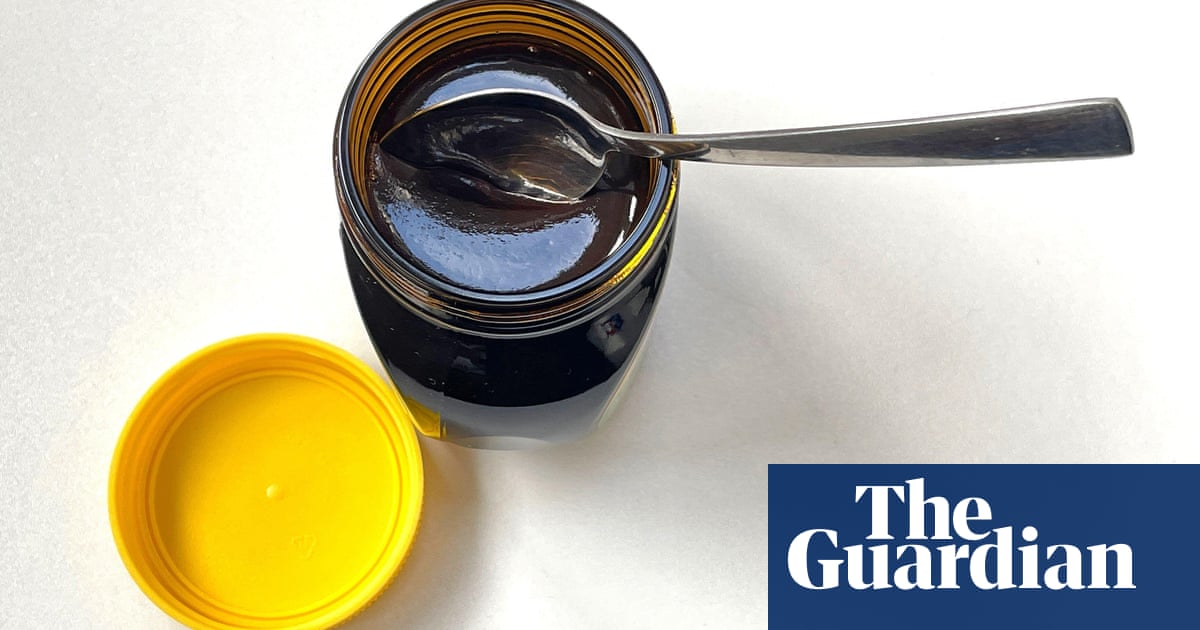
Fenugreek
Nisha Katona, CEO and executive chef, Mowgli Street Food restaurants
For me, fenugreek is the most alchemical ingredient in the Indian kitchen. It comes in four forms and each does something different to different ingredients.
There are some areas of India that use it a lot, like the Punjabis, but we Bengalis use it sparingly and more with vegetables. There are the fenugreek seeds which you use with vegetables such as squashes and pumpkins and potatoes, all of those things that you look at and think, that’s a butter job. Fry the seeds, then toss in your pumpkin, a little bit of turmeric and salt, and cook it down until it’s soft. Heavenly.
Then you have the powder. If you’re doing any marinating or barbecuing, like tandoori chicken or masala chops, it will give that extra punch. You only need half a teaspoon for about 10 lamb chops.
The fresh leaves you would use in breads such as methi paratha. Chop the leaves and fold them into dough; it’s completely sublime. Then there are the dried leaves – kasoori methi – that go in things like butter chicken. This is the one that changes everything. They barely smell of anything, but add them to hot oil, a curry of any kind, and you can smell it down the driveway.
Fenugreek imprints itself on your taste and scent memory. Some people when they smell it say they can smell maple. It doesn’t taste sweet but imagine leafy, woody, autumnal undertones. It enhances the flavours of whatever you cook.
Lao Gan Ma crispy chilli in oil
Tom Kerridge, chef-owner, The Hand & Flowers, Marlow
Honestly, this chilli oil is the naughtiest product in the world; it feels like it is everything that is lush about Chinese food. It’s not too hot and spicy, but it’s clearly chilli. It’s that crunch, that crispness, that saltiness, those lovely umami flavours.
I put it on absolutely everything. I order four jars at a time. There’s a black bean one as well but the crispy chilli is texturally the best. I always use it as a condiment to finish, or as a seasoning, because it’s so salty. Anything that’s a bit soft, where you want a bit of crunch on the top, it’s perfect for. On cauliflower cheese, macaroni cheese, sprinkled on an omelette, on cold meats. A couple of nights ago I just put it on a piece of brie. Lush.
Malt extract
Ravneet Gill, chef, cookery writer and judge on Junior Bake Off
In my house, we always have malt extract and malt powder because my grandma loves to drink it, but I didn’t know you could use it in desserts until I worked at St John. Weirdly, you see it in a lot of pharmacies and they sell it in Holland & Barrett.
I use it to add another dimension tocream-based things such as creme brulee and ice-cream, because the flavour of malt and cream and custard work well together. It’s almost like molasses, treacly, so also enhances the texture. It’s good with chocolate in a ganache, and I also like malt powder in a milkshake. It tastes a bit like Horlicks (because obviously that’s malt powder) and Maltesers.
Use a hot spoon when you’re weighing it out, and if you want to add it to a recipe, start by taking out 20g of a sweet element and using malt extract instead. See how it tastes, then add as you go.
Lea & Perrins Worcestershire sauce
Rukmini Iyer, cookery writer and author of the Roasting Tin series
I use Lea & Perrins in anything cheese- or tomato-based or in any kind of marinade. It doesn’t leave you with a detectable fish flavour, but with salt and a roundness of flavour and spice.
I found out that my grandma in Kolkata cooked with it more than 50 years ago. She used it when marinating fish. Her secret recipe – which I am putting in my new book – is to marinate prawns in Worcestershire sauce before crumbing and frying them. I do it now and it’s absolutely delicious. It just has so much flavour as a marinade, it enhances the umami.
I’ll always put a dash of Worcestershire sauce in cheddar muffins; I like to make everything taste like a Welsh rarebit. It’s a fairly simple mix: flour (I like to use a mixture of spelt and rye flour), grated cheese, yoghurt, a bit of milk, egg, a really good dash of Worcestershire, then sprinkle a bit more grated cheese and Worcestershire on top before baking them.
Also, if I’m making something like a tomato sauce and I’ve run out of anchovies, Lea & Perrins in place of them gives that lovely subtle depth of flavour. Just use it a teaspoon at a time to start with. Treat it as you would fish sauce. That is, with caution.
Carob syrup
Georgina Hayden, cookery writer, author of Taverna: Recipes from a Cypriot Kitchen
Limassol, Cyprus, where my paternal yiayia (grandmother) is from, is famous for carob. Cypriots call it “black gold” because historically the production was a big part of the economy. Carob looks like a cross between fresh tamarind and vanilla pods, almost like a dark brown broad bean. They tend to grow in a cluster and the inside is squidgy.
It plays an important role in Cypriot food culture. For about a third of the year, Orthodox Greeks fast – we don’t eat animal products – every Wednesday and Friday, and before Easter, Christmas and the Assumption of Mary. My yiayia fasts very strictly and she always has carob syrup in the kitchen, it’s like her sweet fix. It’s often added to cakes and doughs to enrichen them and to make them “healthier” without adding too much excessive sugar. Vegans use it as a chocolate alternative and I understand why. It has the richness you get from cocoa and it’s naturally sweet.
I think it works with red meat. If I’m roasting lamb, I’ll finish it with a little bit of carob syrup at the end, to sort of caramelise it. It’s a similar combination to the way you would put a bit of dark chocolate in chilli.
It goes really well with tahini. I put carob in tahinopita, swirly tahini breads and babka. Tahini and carob are essentially the original chocolate and peanut butter, an age-old version of Reese’s Pieces. I always add cinnamon too, for me, that’s the holy trinity.
Cornish saffron
Emily Scott, head chef, Emily Scott Food, Watergate Bay, Cornwall
Saffron has been used in Cornish cooking for centuries. It is said that the Phoenicians bartered saffron for tin and copper. Saffron cake and yeasty saffron buns – that’s a really Cornish thing. It’s now grown by the Cornish Saffron Company, based on the Roseland peninsula on the south coast. It’s only about 25 miles from where I am, but it’s completely different; it’s not like the rugged north coast of Cornwall. For the crocuses, it’s the perfect environment. Seaweed is used as a fertiliser and the saffron is plucked by hand. It’s expensive, but a little goes a long way.
I use it to make saffron aioli. Just add saffron to the mayonnaise and it turns that beautiful burnished yellow colour. It goes so well with tomatoey, fennel fish stew. It’s one of those fish suppers I crave. I love it in risotto as well. We do one in the restaurant; it’s a rich, deep, buttery, parmesan-y risotto with saffron, and we put a crisp fried hen’s egg on top. And I do a monkfish dish with shallots and spring onions as a base. You put monkfish tails into the pan, then add white wine, double cream and a couple of pinches of saffron and just let it reduce. You get the most creamy saffron sauce.
It’s one of those ingredients that always feels quite luxurious but is quite versatile.
Smoked water
Anna Jones, cookery writer and author of One Pot, One Pan, One Planet
I use smoked water to give smoky accents to food that I used to use smoked meats for. It gives a heady, malty, caramel flavour. You have to be gentle with how you use it, as too much can be overpowering.
I use it where classically you might use prosciutto, such as vignarola, or vignole, which is covered in a lid of prosciutto. I love all of the spring vegetables in the dish but I’ve always missed that smoky back note. I make a version of vincisgrassi, the beautiful lasagne with mushrooms and prosciutto and use it in that to mimic the flavour. A few drops in an aioli would work brilliantly, and it’s incredible in risottos and my swede carbonara for people who are carbonara lovers but don’t want to eat meat.
I often add some smoked water to homemade yoghurt flatbreads. They are quick-rise and easy. You mix 200g plain flour (you could use spelt flour), a good pinch of salt, and a teaspoon of baking powder, then you mix in about 200g Greek yoghurt, add a couple of drops of the smoked water and bring it together with your hands. You don’t need to knead it as you would a normal bread. Cut it into four and roll it out, then cook on a barbecue, in a dry frying pan or in a griddle pan for 3-4 minutes each side, or until they are puffed up and you can see they are cooked in the middle.
Mirin
Shuko Oda, co-founder and executive chef, Koya, London
mirin
Photograph: Alamy
Mirin is an essential condiment in Japanese cooking, it’s used in pretty much every dish – you have to have it in your cupboard if you want to cook any Japanese food.
It’s basically a sweetened sake, almost syrupy with a kick of alcohol. Because it isn’t as well known here as soy sauce, for example, I had a chance to think about the different ways you might use it. I always add a bit of mirin to salad dressings. If it’s a western dressing I’ll use olive oil, nice red-wine vinegar, salt, dijon mustard and a touch of mirin. If it’s an Asian kind of dressing I put sesame oil, rice vinegar, soy sauce, a bit of sugar and mirin. If you season fried noodles just with soy sauce, there’s no depth, but when you combine it with mirin, it brings more fullness and roundness to it.
SECRET INGREDIENTS
Photograph: Romas Foord/The Observer
Agar agar
James Cochran, chef-owner, 12:51 and Around The Cluck, London
Agar agar powder
Photograph: Alamy
Agar agar is a natural seaweed extract. It’s a setting agent so is good for vegetarians and vegans. It’s completely flavourless and comes as a white powder. I discovered it when I was working at the Ledbury many moons ago. Because it has no taste, you can make super clean flavours. It’s great with desserts; I make a whipped cheesecake and use it instead of gelatine.
For a recipe at home, add 10g of agar agar to 1 litre of clementine juice (it’s usually 1% of what the weight is), bring it to the boil, let it set, then blend it. You could have that with chicken liver parfait and brioche or you could have a confit duck leg, chicory salad, fresh clementines and the clementine gel. Or to make a lemon meringue pie, mix lemon juice, a bit of sugar and the agar agar. Blind bake a pastry case, add the lemon mix, pipe the meringue on and blowtorch it.
Elisir di gambero rosso
Giorgio Locatelli, chef-owner, Locanda Locatelli, London
I am really attached to this product, as about 10 years ago I spent two nights and three days fishing for gambero rosso prawns in Italy. Their sweetness is unbelievable, a velvety flavour like a lobster that is trying to fall in love with you.
elisir di gambero rosso
They live at such a depth of the sea, that’s why they have this very red colouration. It takes about one hour and 20 minutes to let down the net. When the net comes out of the water, it’s 95% prawns, few other species – incredible.
They freeze the prawns on board with a little bit of seawater. Obviously there are different sizes and some people want to buy them without the head (which is a big mistake because that’s where all the flavour is). For the elixir, they take the heads and practically dry freeze them, then they obtain a powder which gets mixed with the oil.
A couple of little drops and a whole dish comes alive. Everything from a risotto to any type of pasta to some crostini. Our daughter is very allergic to fish and when she was living with us we didn’t even bring fish home, so this incredible fishy flavour was such a treat for Plaxy [Giorgio’s wife] and me, because even if our daughter was around we could put on a little bit and get that absolutely fantastic sweet flavour.
Chintextle
Edson Diaz-Fuentes, chef and co-owner, Santo Remedio, London
pasilla chilemexican pasilla chilli
Photograph: bonchan/Getty
Chintextle is a traditional Mexican paste, an old-fashioned condiment from Oaxaca. It’s made of a little oil, salt, vinegar, garlic, onion, dried shrimp and this beautiful chilli called pasilla de Oaxaca. It’s ground in a metate – a flat volcanic stone – with a pestle, a kind of mortar and pestle. Pasilla de Oaxaca are in danger of extinction as the farmers are not growing them any more, they are very expensive. It is also possible to use other chillies like chipotle – any other smoky chilli.
Traditionally it’s used as a spread. In Oaxaca there are huge tortillas called tlayuda. It’s like a pizza in terms of size and topped with a little bit of chintextle, pork fat, beans, cheese, then lettuce and radishes. But it could be used in a sandwich, or rubbed on vegetables, fish or meat which is then grilled. It adds a smokiness without a smoker. You can mix it with minced meat for burgers, a spoonful of that into the mix will add a different flavour profile. It enhances any dish, it’s like Mexican umami.
Vinegar
Nathan Outlaw, chef-owner, Outlaw’s Fish Kitchen and Outlaw’s New Road, Port Isaac
Carafe of olive oil and jar of vinegar
Photograph: Getty
Vinegar is probably as important as salt and pepper. It gives balance to everything. We’re in Cornwall and there’s a local cider farm five miles from the restaurant, Haywood Farm. We use their apple cider vinegar for all our pickles. It has a roughness, an almost scrumpy-esque flavour and that acidity comes through nicely in dressings and goes really well with raw and cured fish.
I’ve got a small herb garden at the restaurant and once a week I cut anything that’s raggedy and let it steep in the local vinegar. It’s continuous and there’s no recipe for it, it’s just making sure we don’t waste anything. We’ve got one made with hard herbs: rosemary, savory and thyme. And another that’s more aniseedy with tarragon and fennel. We use the herb vinegars as a base for dressings.
We have this lovely lobster dressing on at the moment; we make stock from the old shells and heads, then balance it out with a bit of Cornish cream and cider vinegar.












